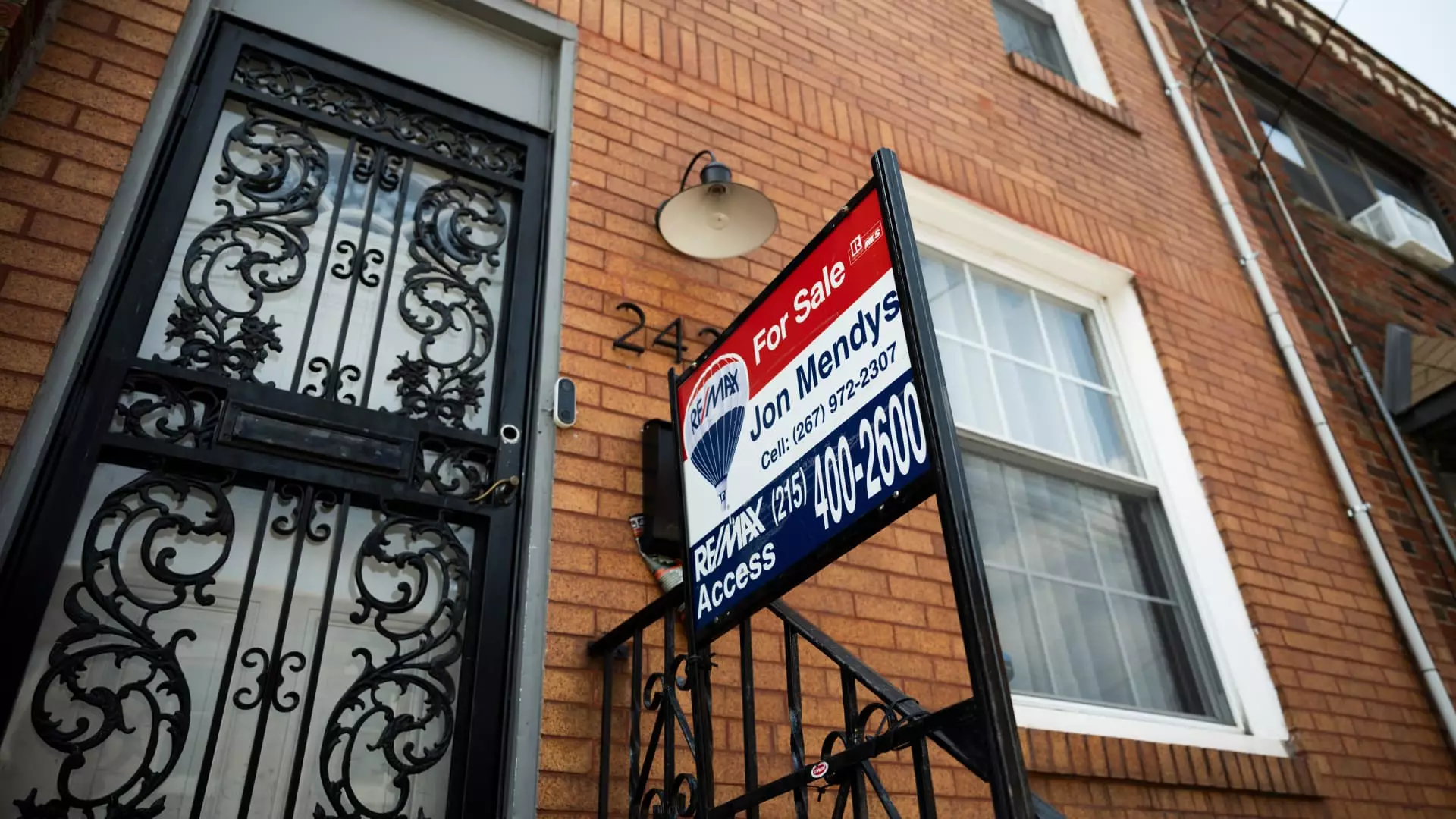The U.S. housing market is undergoing a significant transformation characterized by fluctuating demand, persistent affordability issues, and evolving buyer preferences. As we enter the new year, the landscape remains challenging for potential homeowners, who are grappling with the interplay of high mortgage rates, elevated home prices, and limited inventory. This article seeks to dissect the recent trends and offer insights into the implications for various stakeholders within the real estate sector.
Recent data from the National Association of Realtors (NAR) reveals a concerning downturn in the housing market, with sales of previously-owned homes dropping by 4.9% in January compared to the previous month. This decline placed sales at an annualized rate of approximately 4.08 million units, highlighting the continuing struggles faced by buyers in an environment where mortgage rates have plateaued at over 6%. Interestingly, while this might initially seem like an improvement compared to January 2024 figures, it nevertheless extends a trend that sees sales operating at a 15-year low.
The continual high mortgage rates have suppressed buyer enthusiasm, with many potential homeowners sidelined as they weigh affordability against market conditions. As Lawrence Yun, NAR’s chief economist, noted, the persistent elevation in home prices coupled with stagnant borrowing rates contributes significantly to housing’s growing unaffordability crisis.
Interestingly, inventory levels have experienced a slight uptick, with roughly 1.18 million homes on the market by the end of January, representing a 3.5% increase since December. Despite this growth, the inventory remains critically low, sustaining a mere 3.5-month supply at the current sales pace; a balanced market would typically see around six months of inventory. This discrepancy exacerbates the challenges faced by buyers, as the demand for affordable housing options continues to outstrip what is available.
The reality of spending an average of 41 days on the market before a sale reflects apprehensions among buyers, which suggests that even with increasing options, many are reluctant to commit due to prevailing economic signals. This length of time indicates that buyers are taking extra caution in their purchasing decisions, particularly when faced with elevated prices and financial uncertainty.
Further complicating the scenario, home prices have continued to ascend, reaching a median sale price of $396,900 in January—a significant increase of 4.8% year-over-year. This marks the highest recorded figure for the month, underscoring persistent inflationary pressure within the housing sector. All regions tracked by NAR experienced price growth, emphasizing a nationwide trend that places affordability further out of reach for many aspiring homeowners.
Dynamically, the composition of buyers in today’s market reflects shifting preferences, with all-cash offers constituting 29% of sales, although slightly down from 32% a year earlier. The trend indicates that historically agile investors remain active in the market, potentially sidelining traditional buyers who depend on financing amidst prevailing economic conditions. First-time homebuyers, who represent a mere 28% of sales, face significant hurdles in entering a market that has not been kind to new entrants. This share, below the typical 40% benchmark, signifies an alarming trend for future homeownership rates.
The disparity between various price segments has become a notable feature of the current housing market. Sales of homes priced between $100,000 to $250,000 have nearly stagnated, evidencing a 1.2% year-over-year decline. In contrast, properties priced over $1 million witnessed a remarkable increase of nearly 27%. This divergence presents a worrying indicator that the market is favoring high-end transactions, further deepening the affordability crisis at the entry-level price point.
Realtors have reported diminished buyer activity, despite a greater number of properties listed for sale. This contrast is not merely academic; it suggests a misalignment between available inventory and buyer capability or willingness to engage in a market fraught with complexity.
The current state of the U.S. housing market is marked by a delicate balance of rising prices, evaporating affordability, and hesitance from prospective buyers. The ongoing adjustments in mortgage rates, while offering a glimmer of hope, are insufficient to offset the broader economic realities that dictate buyer behaviors. The challenge ahead lies in addressing these affordability concerns while stabilizing the market to ensure it remains accessible for new entrants, who now find themselves increasingly marginalized in a landscape dominated by higher-end sales. The road to recovery may be complex, but understanding these dynamics is crucial for stakeholders aiming to navigate the tumultuous waters of the real estate sector effectively.

